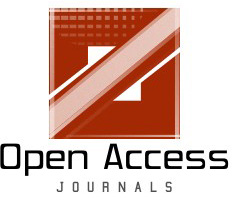Download
Cover Page IJESM_August_2019......
PARTICULAR
|
Page No.
|
 INTER SECTION GRAPH OF FINITE ABELIAN GROUP AND SUB
GROUPS OF FINITE GROUPS
INTER SECTION GRAPH OF FINITE ABELIAN GROUP AND SUB
GROUPS OF FINITE GROUPS
S.DEVI LATHA
Abstract:
In a graph theory we have use basis of the group like abelian group
and subgroup for intersection. An intersection containing a non- unit
element .We characterize certain classes of subgroup intersection
graphs corresponding to finite abelian groups. We check all its
solvable groups whose intersection graphs are triangle-free.
Surrounded the other results, we analysis all abelian groups whose
intersection graphs are complete. Finally, we study the intersection
graphs of cyclic groups
Download full Lenght Paper......
|
1-19
|
 EFFECTIVE WORK PERMIT SYSTEM TO MINIMIZE THE
HAZARDS IN EID PARRY (INDIA) LIMITED
EFFECTIVE WORK PERMIT SYSTEM TO MINIMIZE THE
HAZARDS IN EID PARRY (INDIA) LIMITED
P.BALAMURUGAN
Abstract:
The human element of the system has one of the biggest potentials for either
causing or preventing an accident. Safe job performance by operating,
maintenance personnel and contractors has a tremendous positive impact on
safety. The Permit System is an important element of safety management
system and implementation of this in true spirit shall help in ensuring a safe
working environment, thereby reducing the possibility of injury to personnel,
protect property, and avoid fire, explosion & adverse effect on the
environment. A permit-to-work system is a formal recorded process used to
control work which is identified as potentially hazardous. It is also a means
of communication between site/installation management, plant supervisors
and operators and those who carry out the hazardous work. Essential features
of permit-to-work systems are clear identification, training and standard
control measures. In this thesis various types of work permit systems such as
confined space entry, hot work permit, excavation permit, radiation permit,
electrical isolation and work at height permit are discussed. The methodology
to develop a new effective work permit system is also given
Download full Lenght Paper......
|
20-42
|
 RELATIONS BETWEEN NEAR- RINGS AND RINGS
RELATIONS BETWEEN NEAR- RINGS AND RINGS
A. R .GOTMARE .
Abstract:
In this paper we investigate the following conditions .
(i)
( , ) ( )n x y
xy xy
(ii)
( , ) ( )n x y
xy xy
(iii)
m x y n x y ( , ) ( , )
xy y x
(iv)
n x y ( , )
xy xy x
(v)
n x y m x y ( , ) ( , )
xy x y
and finally prove that under appropriate additional hypothesis a
d g near ring must be commutative ring. The Theorem proved here is generalization of
many recently established results.
Download full Lenght Paper......
|
43-47
|
 MATHEMATICAL MODEL FOR WATER POISONING DUE TO
DRAIN OF POLLUTANT WATER IN LAKE BY INDUSTRY
MATHEMATICAL MODEL FOR WATER POISONING DUE TO
DRAIN OF POLLUTANT WATER IN LAKE BY INDUSTRY
AVHALE.P.S
Abstract:
Now a day’s some industry drains the poisonous pollutant water in lake directly without
any process. Water from lake, Municipal Corporation supply to the city which is uses as
the drinking water. If drain is close to water pump of supply then it hazardous. Now issue
arise that what is safe distance between water pump of supply and drain point of west by
industry where the concentration of drug is to low that which is not harmful to drink. You
use advection diffusion equation for modeling the situation.
Download full Lenght Paper......
|
48-53
|
 ON NEUTROSOPHIC SOFT COMPACT TOPOLOGICAL SPACES
ON NEUTROSOPHIC SOFT COMPACT TOPOLOGICAL SPACES
A.HaydarEş
Abstract:
In this paper, the concept of almost and near compactness
on neutrosophic soft topological space have been
introduced along with the investigation of their several
characteristics. That’s shown that the neutrosophic soft
continuous image of neutrosophic soft almostly compact
is neutrosophic soft almostly compact and it’s properties
developed here.
Download full Lenght Paper......
|
54-64
|
 OPTIMAL CONTROL AND COST-EFFECTIVENESS ANALYSIS OF
INFECTIOUS CORYZA DISEASE EPIDEMIC MODEL
OPTIMAL CONTROL AND COST-EFFECTIVENESS ANALYSIS OF
INFECTIOUS CORYZA DISEASE EPIDEMIC MODEL
ALFRED HUGO
Abstract:
This paper concentrates on the dynamics, control measure and cost-effectiveness analysis of Infectious Coryzadisease (ICD). We
examined the boundedness of ICD model in the
4 R
. Different
controls types used to determine the optimal level of strategy that
decreases the spreads of the diseases as well as the cost of
implementation of the control. Simulation of different variables of
the model was performed to justify the analytical results and we have
used Pontryagin’s maximum principle to derive necessary conditions
for the optimal control of the disease. The cost-effectiveness analysis
results show that an optimal effort on vaccination and treatment are
the most cost-effective strategies to combat the epidemic of
Infectious Coryza with limited resources. Therefore, ICDcan is
controlled if the farmers will usevaccinationand treatment control
properly
Download full Lenght Paper......
|
65-86
|
 Modification ofPhotophysical Properties of Benzoic Acids upon Inclusion into Per-6-amino-
- cyclodextrin Cavity and its Impact
Modification ofPhotophysical Properties of Benzoic Acids upon Inclusion into Per-6-amino-
- cyclodextrin Cavity and its Impact
Seenu Kumari
Abstract:
Cyclodextrins (CDs), a class of cyclic oligosaccharides, form complexes of inclusion
with various organic compounds in water through non-covalent interactions through their well-defined hydrophobic inner cavities. CDs have been widely used in organic synthesis, because
they can bind substrates and catalyze high selectivity chemical reactions, as well as for sensor
applications. The microenvironment of chromophores within CD usually results in adjustments
in the properties of their absorption and fluorescence. Although native “CDs are of great interest
to many visitor species as hosts themselves, there are many limitations in their structural
features regarding the scale, shape and availability of chemically useful functional groups.
Therefore, they need to be updated in such a way that the size and shape can be changed and
new functional groups, catalytically active groups or chromophore can be added to expand their
applications and the specificity of host-guest. Chemical modification of CDs provides both
tremendous possibilities and challenges for chemists as the modified cyclodextrins are exquisite
molecules that are invaluable in investigations at the limits of chemistry ranging from enzyme-like catalytic activity and antibody-like binding to esthetically pleasing molecules. UV-visible,
FT-IR, ICD and molecular modeling techniques study the binding activity and mode of inclusion
of benzoic acid, 4-nitrobenzoic acid, 4-hydroxybenzoic acid and 4-N, N-dimethylaminobenzoic
acid in per-6-NH2-β-CD” at two different pH values (3.5 and 7). All the five acids form stable
1:1 inclusion complexes and the binding constants obtained for per-6-NH2-β-CD complexes are
compared with that of reported binding constants for β-CD complexes and striking differences
are noticed. The significant enhancement in binding constants at pH 7.0 clearly highlights the
importance of electrostatic interactions in determining CD complexation. These factors are vital
ingredients in choosing the right CD for biological applications, where solubility and
modulations of luminescence for monitoring the guest are very important. This research paper
more discuss about the Modification ofPhotophysical Properties of Benzoic Acids upon Inclusion
into Per-6-amino-- cyclodextrin Cavity
Download full Lenght Paper......
|
87-102
|
 FORMULATION OF FLOW OF FLUID THROUGH POROUS MEDIA
FORMULATION OF FLOW OF FLUID THROUGH POROUS MEDIA
Dr. Shivkumar Biradar
Abstract:
A porous medium is a solid containing void space (pores), related or withdrew, dissipated inside
it in either a norm or irregular way. These indicated pores may contain a variety of fluids, for
instance, air, water, oil, etc. In case the pores address a specific piece of the mass volume, a
complex network can be outlined which can pass on fluids. Simply these vulnerable and porous
media are thought about in this volume.
Download full Lenght Paper......
|
109-119
|
 CONCEPTUAL RESEARCH BASED ON NEURAL NETWORKS FOR ORGANIC
CHEMISTRY REACTIONS AND SYNTHESIS
CONCEPTUAL RESEARCH BASED ON NEURAL NETWORKS FOR ORGANIC
CHEMISTRY REACTIONS AND SYNTHESIS
Jagjivan Ram
Abstract:
Response expectation stays one of the significant difficulties for natural science and is
an essential for proficient engineered arranging. Creating calculations that, similar to people,
"learn" from being presented to instances of the utilization of the standards of natural chemistry
is attractive." We investigate the utilization of brain networks for anticipating response types,
utilizing another response fingerprinting strategy. We consolidate this indicator with SMARTS
changes to construct a framework which, given a bunch of reagents and reactants, predicts the
reasonable items. We test this strategy on issues from a famous natural science reading material.
Download full Lenght Paper......
|
120-127
|
 A STUDY ON PRODUCTION, PURIFICATION AND INDUSTRIAL APPLICATION OF
MICROBIAL XYLANASE
A STUDY ON PRODUCTION, PURIFICATION AND INDUSTRIAL APPLICATION OF
MICROBIAL XYLANASE
Kottala Ravindar
Abstract:
The most prevalent noncellulosic polysaccharide, xylan makes up 20–35% of the dry weight of the
biomass of tropical plants and is found in both hardwoods and annual plants. Xylans are less
prevalent in temperate softwoods and can make up as much as 8% of the total dry weight. In the
secondary cell wall, where it is most abundant, xylan is thought to be creating an interphase with
lignin and other polysaccharides. It is believed that xylan molecules interact with polysaccharides
like pectin and glucan as well as the phenolic residues in lignin. Xylans are linear homopolymers
that include D-xylose monomers and are connected by -1, 4-glycosyl linkages in their most basic
forms. By randomly cleaving -1, 4 glycosidic bonds, xylanase (EC 3.2.1.8) degrades -1, 4 xylan,
resulting in xylose and xylo-oligosaccharides like xylobiose. Xylanases play a significant role in
industry since they can be used to clarify fruit juices, brighten pulp for animal feed, and bleach
paper pulp in the paper making process. Applications for xylanase eliminate the use of pricy,
environmentally harmful chemicals. Xylanases are abundant in microorganisms and are produced
by numerous bacterial taxa, actinomycetes, and fungal species. High levels of extracellular
xylanases are secreted by a number of Bacillus species and filamentous fungi. Xylanase secretion
frequently correlates with either a low or high cellulase concentration. It is recommended to employ
cellulose-free xylanases when treating pulp because cellulase may negatively impact the quality of
the paper pulp. Finding naturally occurring microbial strains that can secrete cellulose-free
xylanases under ideal fermentation conditions is the most realistic strategy. Xylanase needs to be
stable at high temperatures and an alkaline pH in order to be used prominently in the bleaching
process.
Download full Lenght Paper......
|
74-84
|
 Study of ecological behaviour and morphometry of eggs
in Red-wattled Lapwing (Vanellus indicus)
Study of ecological behaviour and morphometry of eggs
in Red-wattled Lapwing (Vanellus indicus)
Anshu
Abstract:
They are ground birds that are incapable of perching. Their characteristic loud alarm calls
are indicators of human or animal movements. The red wattled lapwing is a monogamous bird. It
breeds from March to August and majority of eggs are laid in April to June. Female lays 3-4
eggs. Nests are difficult to find as eggs usually match the ground pattern. The eggs hatch in 28-
30 days. Cryptically, plumaged chick lies still when alarmed. The red wattled lapwing is noisy
bird and has loud ‘did-he-do-it-call’. It has slow flight with deliberate flaps. They constantly
make alarm noises at a higher pitch and a soft sound for guiding the hatchlings. The observation
on ecological behaviour and morphometry of eggs of Red Wattled Lapwing was observed during
March to May 2017 in agriculture land of Bisauli, Badaun, U.P. Two clutch size in which 08
eggs were recorded in the ground nest. Average length and breadth or width of eggs are (L × W)
4.20 X 3.10cm. and average weight of an egg was 18.12 gm. and average egg shape index (ESI)
was 75.80. Behaviour of both the parents were observed during protecting and imprinting
hatchlings.
Download full Lenght Paper......
|
128-133
|




 Call for Papers
Call for Papers












